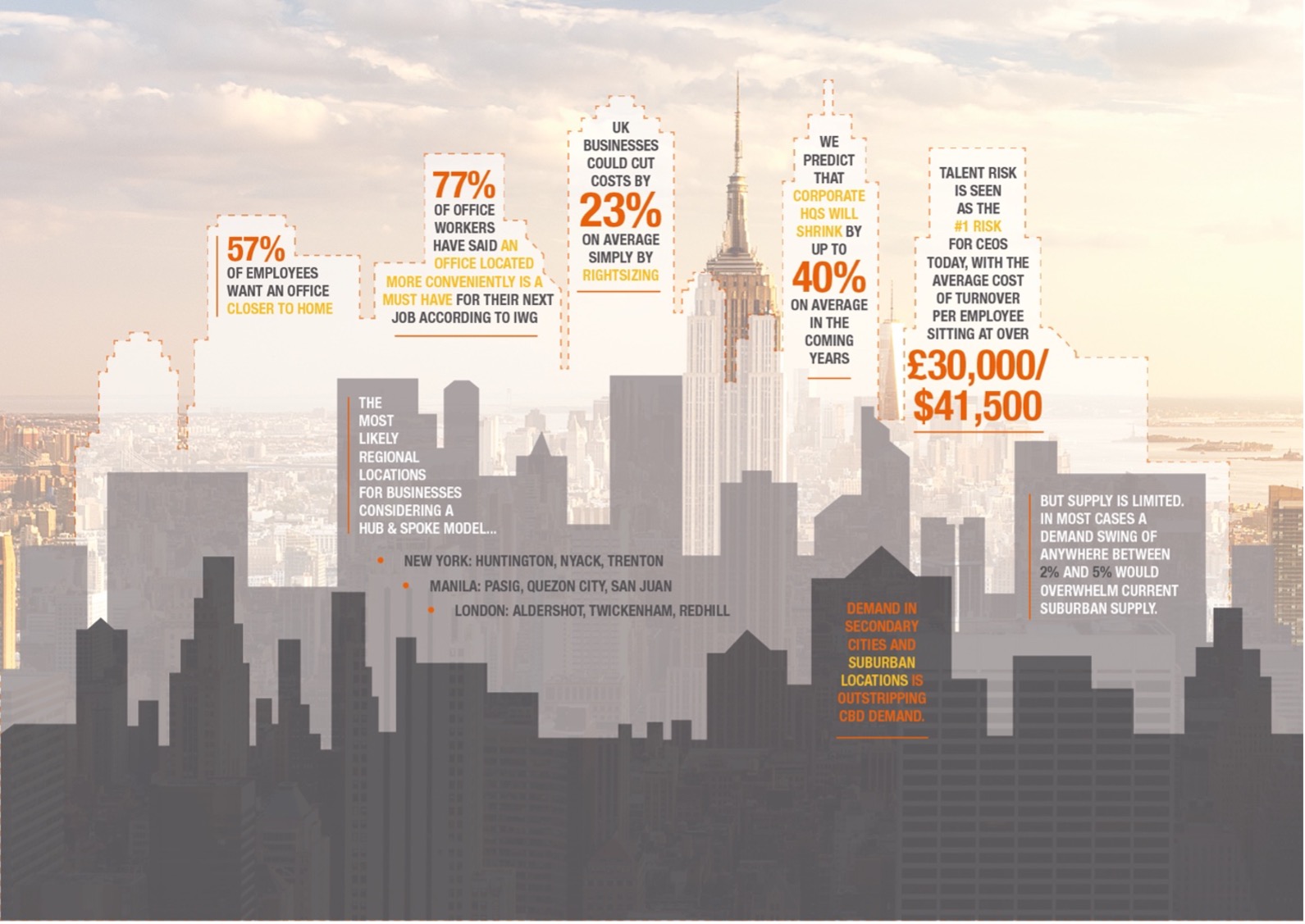Workers could save over £2,200 year and ‘get back’ 98 mins a day if companies adopted a Work Near Home model for offices in the future. For companies that adopt this approach, they could save upwards of 23 per cent by utilising a “Hub and Spoke” model that removes reliance on city centres for office locations.
The research*, sets out the financial and environmental benefits of a more dispersed office model. The total time saving alone means that workers are effectively saving 39 days a year in commuting time.
The research found that 57% of employees want an office that is closer to their home. However, if demand for office space in the suburbs and smaller towns across the UK continues at current levels, then supply will run out in 18 months. If just one per cent of city centre workspace demand moved towards the urban “fringe” markets then it would very quickly become saturated.
“With 20 to 40 per cent of the workforce predicted to move towards more suburban locations in the coming years, then the office market has some work to do to generate sufficient supply of quality workspace,” explained John Duckworth, Managing Director of the Instant Group UK and EMEA.
Since the start of the Pandemic, demand for regional workspace has significantly outstripped that of Central London and the other large cities. Occupancy rates of suburban locations have also remained very high, for example suburban Manchester offices have seen occupancy rates of 85%+ even during the various lockdowns.
“While the market waits for supply to catch up with demand in suburban locations, the businesses that move quickly will reap the benefits of increased agility. More choice for employees will create a real unique selling point in the war for talent,” said Duckworth.
Guy Douetil, Managing Director EMEA at HICKEY added: “Employees are now more empowered than ever to choose where, when and whom they work. Companies need to understand that in selecting a location the emphasis has changed from ‘where do people go the office to work’ to ‘where do people live’? It is also worth remembering that no single city is the same, it is vital to understand how commuting patterns vary between locations in terms of mode, ease and time of commute.
“A critical element for the future of the office market is to be able to test the approach that works for each business,” said Duckworth. “The conventional leased market for offices – which demands minimum commitments of five years or more – has not allowed businesses to take a more agile approach towards what works for their employees in terms of location and type of space. But, with the growth in flex supply of serviced, coworking or even private office space, that is beginning to change and CRE leaders will be in a position to adapt their approach with less long-term commitment and greater agility.”
Research fromThe Instant Group and HICKEY*









